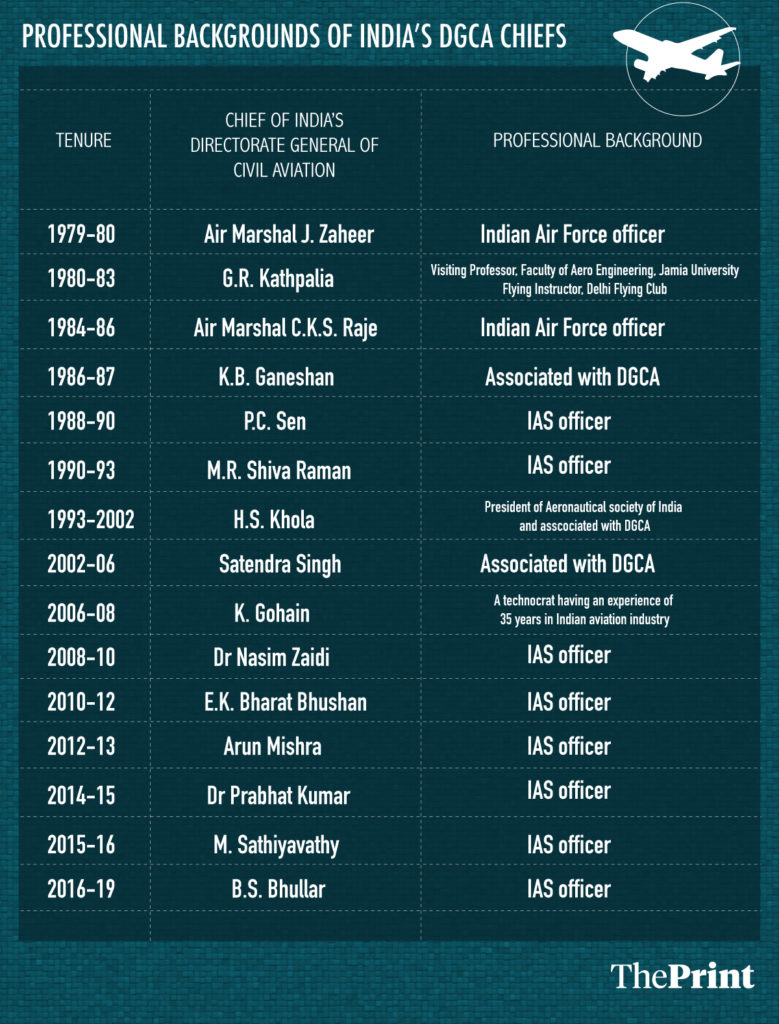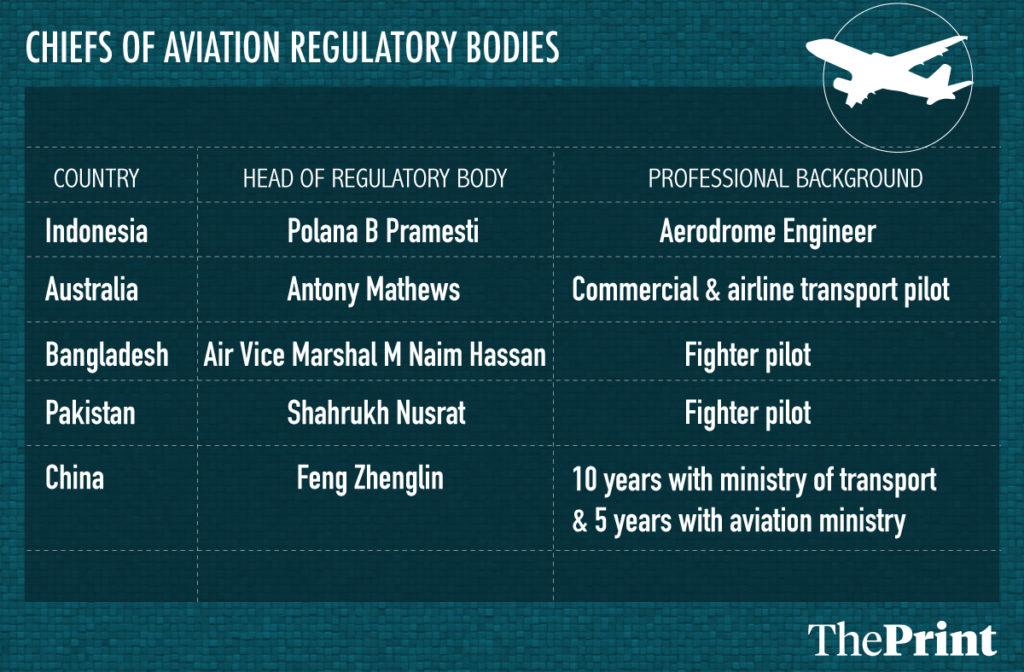What Narendra Modi Should Do to revive Indian Aviation
Indian Aviation is growing at rapid pace. However, the airline are struggling badly despite very strong growing market. Recently, Jet Airways shut dow its operation after operating for over 25 years.

To run any domain, its important to have the top head highly experienced ,domain expertise, and highly enthusiastic.
Indian Democracy is currently governed by Member of Parliaments. Among those elected MPs, one of them becomes the Civil Aviation Minister.
To run a portfolio, It is important for Civil Aviation Minister to know have the in-depth knowledge of Civil Aviation. Moreover, the top head of DGCA or Airline should have domain expertise , which is currently missing from Indian Aviation.
Currently none of Civil Aviation Minister, DGCA, AAI Head, AIR INDIA CMD is from Aviation Background. Actually, Its not their personal mistake to be on that position, they have earned it. However, the actual problem is of criteria to get that position.
Do you know ?
In June, when the US Federal Aviation Administration — deemed the apex airline regulator worldwide — called civil aviation authorities from across the world to review software modifications to the grounded Boeing 737 Max, it didn’t extend the invite to India’s watchdog — the Directorate General of Civil Aviation (DGCA). This is big shame for Indian Aviation.
It was no anomaly — just the latest in a series of international aviation safety seminars that no DGCA official has been invited to.
DGCA representatives have, off late, not been invited to seminars of the US-based International Society of Air Safety Investigations (ISASI). The Indian aviation body has also been left out of safety seminars held in Europe.
The repeated snubs, experts say, is due to a structural issue at the apex of the aviation regulatory sector in the country.
Unlike in even other developing nations such as Indonesia, Pakistan, Bangladesh and the Philippines, where the regulatory bodies are headed by technocrats with an aviation background, all the top posts in the DGCA, the Airport Authority of India (AAI) or for that matter even public carrier Air India are held by Indian Administrative Service (IAS) officers.
Such is the situation, that in the past decade, the DGCA has always been headed by an IAS officer, not always with the relevant domain experience. The last technocrat to head the body was the late Kanu Gohain (2007-08), who had 35 years of experience in the industry.
The upsurge of IAS officers donning the role, however, only began after his tenure. Since 1980, for instance, of the 15 DGCA heads, eight have been from the IAS cadre (see box). But six of them have headed the DGCA in the last decade alone.
Captain Mohan Ranganathan, an aviation safety consultant and former flight instructor, said bureaucrats made their way into the DGCA after Gohain’s tenure.
“Bureaucrats in the ministry wormed their way into DGCA via the International Civil Aviation Organisation (ICAO) route,” Ranganathan said. A joint secretary would be sent to ICAO as India’s representative and qualification requirements for DGCA were tweaked by the ministry to make sure that the IAS cadre swarmed into all the top posts in aviation. None of the bureaucrats knew the subject.”
The former flight instructor said it is a far cry from the early days when the DGCA was headed by professionals.
“Except for a short stint of M.R. Sivaraman in the ’90s, the DGCA in the past had always been someone with an aviation background,” he said. “There was a time when Air Marshall C.S.K. Raje, a former Indian Air Force chief, was the DGCA. He was very good and he did understand the difference between a military set up and a civil aviation one.”
This despite the fact that India is one of the 10 countries that flew the controversial new generation jet and is also Indian Aviation is one of the world’s fastest-growing aviation markets.
IAS musical chairs in DGCA– Indian Aviation
In the decade since Gohain’s retirement, the DGCA head has always been an IAS officer. Gohain was succeeded by senior IAS officer Syed Nasim Ahmad Zaidi, who took over in 2008.

After Zaidi, Bharat Bhushan was appointed to the post in 2010. A former financial adviser in the civil aviation ministry, Bhushan was sacked in 2012.
DGCA joint secretary Prashant Narain Sukul held charge temporarily before another IAS officer, Arun Mishra, took over as DG in 2012.
In 2014, Prabhat Kumar was appointed a full-time DGCA chief for three years but he was removed after a year of his appointment. His removal came at a time when the US FAA was reviewing the downgrade of India’s safety rankings.
Kumar was succeeded by M. Sathiyavathy who took over in 2015. She was the first woman DGCA chief but was a career bureaucrat. She had held positions such as joint director general in the Directorate General of Foreign Trade, Ministry of Commerce and Industry; controller, ISRO Satellite Centre, Department of Space; member secretary, Central Silk Board and the Ministry of Textiles.
Once she was moved out to another ministry in 2016, IAS officer B.S. Bhullar, the current DGCA chief, took over.
While Bhullar and Sathiyavathy refused to comment, Zaidi cited his association with the ICAO to defend his appointment.
“I had six years of experience with the ICAO,” he said. “I spent two years with DGCA and brought adequate transformational changes in the aviation sector. I dealt with Pawan Hans, the Airport Authority of India and Aerodrome services etc. I was later made the secretary, civil aviation.”
Zaidi admitted that the government should look for suitably qualified officers but added that in case it can’t, it should look for an IAS officer who has adequate aviation background and good exposure.
“The most preferred solution is to find a suitably qualified officer having a sound technical background, who knows good management and international cooperation and has sufficient aviation background,” he said. “This officer should be found internally and if that is not possible then look for an IAS officer who has adequate aviation background and good exposure.”
In other countries
India’s dependence on bureaucrats to head its aviation watchdog isn’t even in sync with countries in the region.
Pakistan’s Civil Aviation Authority (CAA) is chaired by a former fighter pilot — Shahrukh Nusrat began his career with the Pakistan Air Force in 1979 and served till the rank of squadron leader. He later joined the civil services of Pakistan in 1993. According to the CAA website, Nusrat also holds a BSc Avionics degree.
Bangladesh’s Civil Aviation Authority too is headed by a former fighter pilot — Air Vice Marshal M. Naim Hassan. He has also held key aviation positions such as the commanding officer of the 25 Squadron; director, special security force, Prime Minister’s office; air officer commanding and chief of air staff operations among others.

Further east, Indonesia’s aviation regulatory body is headed by Polana B. Pramest. Polana has a post-graduate diploma in aerodrome engineering from the Singapore Aviation Academy and Nanyang University. She also has a post-graduate programme in transportation from the Bandung Institute of Technology.
Australia, for instance, has appointed former commercial pilot Anthony Mathews as head of its aviation regulator. Mathews was also a Qantas regional airline manager and on the board of Air Services, Australia. He has spent over 45 years in the aviation industry.
Aerospace analyst Saj Ahmad says there is a lesson for India from these countries.
“In short, India should be looking to other developed nations and should procure staff who have the technical capabilities to undertake leadership at an office such as the DGCA,” he said. “While it’s commendable to employ from the IAS, civil servants are not experts. The IAS is also too closely aligned to the government to make any coherent and independent decisions.”
What Narendra Modi should do ?
- Civil Aviation Minister – Before anyone takes the oath as Civil Aviation Minister, he should be given at least 6-12 months training for major aspects and problems of Civil Aviation.
- The head of DGCA should strictly from Aviation background with deep domain expertise and highly problem solving attitude.
- The head of state run airline,M/s Air India should have professional CEO and management who can run the airline in a much better way than a regular IAS.
- The ministry should have professional managers and CEO who can run the govt dept in a professional manner. Currently Babudom is creating a havoc in all the airlines.
Reference – The Print



